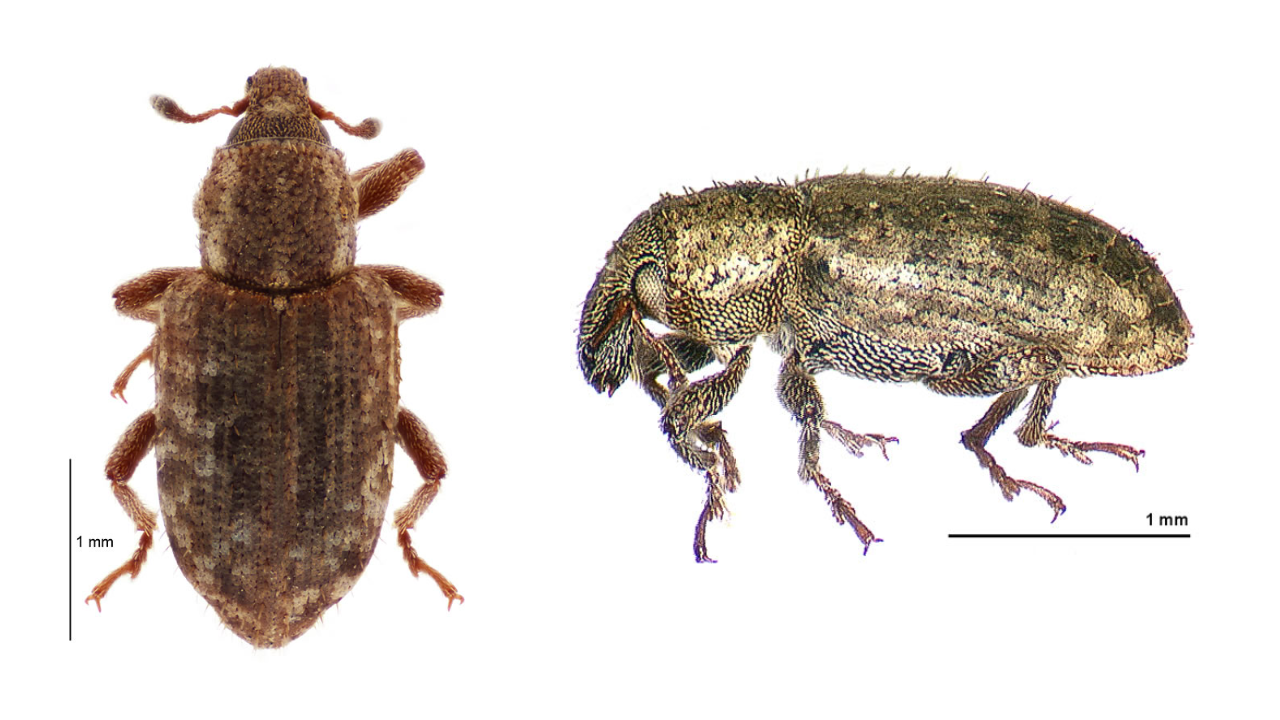Argentine Stem Weevil: Identification, Damage, and Control in New Zealand
Argentine Stem Weevil larvae destroy ryegrass tillers
Populations can reach 500-1000 larvae/m².
What is an Argentine Stem Weevil?
Argentine Stem Weevil (Listronotus bonariensis), often referred to as ASW, is a small weevil from South America that is now found throughout New Zealand. Adult stem weevils are hard to detect by the eye being only 3.5mm long. Larvae feed in the developing shoots of many important crops including pasture, maize, sweetcorn, cereals, and brassicas and it is the larvae that are responsible for the tremendous economic losses attributable to ASW in New Zealand each year. Depending upon the weather experience ASW can complete multiple life cycles each year with egg laying taking place between July and March.
Black elongated eggs are laid singularly or in groups of 2-4 in the leaf sheath of grasses
On hatching the white legless larvae tunnel into the grass stem where they usually remain until ready to pupate
Larvae pass through five stages increasing in size as they do. Larvae in the 5th stage may live outside of the plant particularly if the grass tillers are small
Pupation occurs in the litter layer.
How to Identify an Argentine Stem Weevil?
ASW larvae destroy ryegrass tillers by boring into the base of their stems. Populations can reach 500-1000 larvae/m², causing significant pasture damage. To find larvae, look for dead or dying central leaves in tillers, that when lightly pulled come straight out of the plant - due to being eaten at the base of the stem. The base of these stems shows a small hole (if larvae are still inside) or significant damage inside
Larval damage mainly occurs from mid-October to mid-April. It is usually seen when pastures are growing slowly and is often confused with drought stress. Younger pastures seem to be more susceptible than older ones. In most areas, ASW has two generations a year, one in spring and another in summer. Generally, the summer generation is the most damaging, between January and March. Adult weevil feeding is characterised by small rectangular ‘windows’ 2-3 mm long on the leaf blade (shown in photo). Adults do not affect the persistence of established pasture but can kill ryegrass at establishment.
Photo credit: Wikipedia
Establishment
New ryegrass sowings can fail from adult ASW attacks in late spring - autumn. This is most likely in grass-to-grass or cereal-to-grass sowings with minimal tillage, or when undersowing into an existing pasture, as ASW numbers can build up on the previous grass or cereal. Cultivation can destroy larval populations, however adults may survive. Adult ASW can kill ryegrass seedlings as they first emerge, predominately in the first few weeks after sowing, however in dry conditions slower establishment means plants are in a vulnerable stage for longer.
Seed treatment
If sowing new grass where ASW is a potential problem, use of a suitable seed treatment, such as Gaucho, is recommended to help protect seedling plants. Additionally, in grass-to-grass or cereal-to-grass spray-drill situations where ASW numbers can be high, adding an appropriate insecticide to the final glyphosate spray prior to sowing is recommended, to reduce the ASW population. Endophytes should not be relied on to provide protection against ASW adults for new ryegrass sowings. Ryegrass without endophytes have no protection against adult ASW, and some endophytes give only limited protection if any. Effective management of Argentine Stem Weevil requires a multi-faceted approach, including careful monitoring, timely intervention, and integrated pest management strategies. Farmers should consider rotating crops, utilizing resistant cultivars where available, and maintaining healthy pasture conditions to minimize the impact of this damaging pest. Regular field inspections and accurate identification are crucial for early detection and preventing widespread damage.
Conclusion
Effective management of Argentine Stem Weevil requires a multi-faceted approach, including careful monitoring, timely intervention, and integrated pest management strategies. Farmers should consider rotating crops, utilizing resistant cultivars where available, and maintaining healthy pasture conditions to minimize the impact of this damaging pest. Regular field inspections and accurate identification are crucial for early detection and preventing widespread damage.
To protect your crops and pastures from ASW, take proactive steps today. If you suspect an infestation or need guidance on management strategies, consult with an agricultural specialist or explore available pest control solutions. Stay informed, stay vigilant, and ensure your pasture remains productive year-round!


